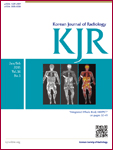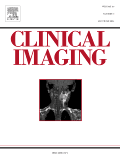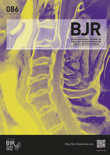
Radiography
Scope & Guideline
Elevating Radiology Through Cutting-Edge Research
Introduction
Aims and Scopes
- Clinical Imaging Practices:
The journal emphasizes research related to clinical imaging techniques, including X-ray, MRI, CT, and ultrasound. It explores optimal imaging protocols, patient safety, and advancements in imaging technology. - Radiation Safety and Dosimetry:
A key focus is on the management of radiation exposure for patients and healthcare professionals. This includes studies on dose optimization, radiation protection measures, and the implications of radiation in various imaging contexts. - Patient-Centered Care:
The journal advocates for patient involvement in radiographic practices, including the exploration of patient experiences, communication strategies, and the impact of imaging procedures on patient outcomes. - Professional Development and Education:
There is a strong emphasis on the educational aspects of radiography, including training methodologies, competency frameworks, and the integration of new technologies in educational settings. - Research and Evidence-Based Practice:
The journal promotes the importance of research in informing clinical practice and encourages radiographers to engage in research activities to enhance evidence-based practices in their work. - Interdisciplinary Collaboration:
The journal explores the role of radiographers within multidisciplinary healthcare teams, focusing on collaboration with other healthcare professionals to improve diagnostic and therapeutic outcomes.
Trending and Emerging
- Artificial Intelligence and Machine Learning:
There is a significant increase in research exploring the application of AI and machine learning technologies in radiography, particularly in image analysis, workflow optimization, and predictive modeling. - Telehealth and Remote Imaging Services:
The rise of telehealth has prompted research into remote imaging services, focusing on patient access, workflow implications, and the effectiveness of virtual consultations in radiographic practice. - Patient Experience and Engagement:
An emerging focus on understanding and improving patient experiences during imaging procedures reflects a broader trend towards patient-centered care, with studies examining patient feedback, comfort, and anxiety management. - Sustainability in Radiography:
Research addressing environmental sustainability practices in radiography is gaining prominence, including studies on waste management, energy consumption, and the adoption of green technologies. - Interprofessional Education and Practice:
The trend towards interdisciplinary collaboration is reflected in research exploring the integration of radiography education with other healthcare disciplines to enhance patient care and teamwork. - Advanced Practice Roles:
There is an increasing emphasis on the development and recognition of advanced practice roles within radiography, focusing on the competencies required for radiographers to take on more specialized functions.
Declining or Waning
- Traditional Imaging Techniques:
There has been a noticeable reduction in research focused on traditional imaging techniques without technological advancements, as the field shifts towards digital methods and AI integration. - Basic Radiography Education:
Studies centered on foundational education practices in radiography are becoming less frequent, with a greater focus on advanced practice, specialization, and interdisciplinary education. - Regulatory Compliance and Policy Discussions:
Research related to regulatory frameworks and compliance issues appears to be waning, possibly due to the increased emphasis on practical applications and outcomes rather than policy discussions. - Single-Modal Imaging Studies:
There is a decline in publications focusing exclusively on single-modality imaging, as the trend shifts towards integrated approaches that combine multiple imaging modalities for comprehensive diagnostics. - Historical Perspectives in Radiography:
Research that focuses on historical analyses of radiography practices or technologies is becoming less common, with a stronger emphasis on current and future trends.
Similar Journals

KOREAN JOURNAL OF RADIOLOGY
Advancing Imaging Excellence in RadiologyKorean Journal of Radiology (ISSN: 1229-6929, E-ISSN: 2005-8330), published by the Korean Society of Radiology, stands as a leading international platform for the dissemination of high-quality research and advancements in the fields of radiology, nuclear medicine, and imaging. With a remarkable impact factor and ranked in the Q1 quadrant in its category, this journal showcases cutting-edge studies, clinical investigations, and comprehensive reviews that significantly contribute to the understanding and practice of medical imaging. Researchers, clinicians, and students alike will find the journal an invaluable resource, featuring innovative methodologies, case studies, and essential updates in imaging technology. Since its inception in 2000 and continuing through 2024, the Korean Journal of Radiology remains dedicated to promoting excellence and fostering collaborative research within the global radiology community, underscoring the importance of imaging in modern medicine.

Radiological Physics and Technology
Empowering research in radiological physics.Radiological Physics and Technology, published by SPRINGER JAPAN KK, is a prominent journal that serves as a crucial resource in the multidisciplinary fields of medicine and radiation sciences. With an ISSN of 1865-0333 and an E-ISSN of 1865-0341, the journal has been converging impactful research from 2008 to 2024. It holds a commendable position in academic rankings, currently classified in Q2 in Physical Therapy, Sports Therapy and Rehabilitation and Radiation, along with Q3 for Medicine (miscellaneous) and Radiology, Nuclear Medicine and Imaging. The journal is well-regarded in the academic community, reflected in its Scopus rankings that place it in the upper tiers of its respective categories. Although it currently does not offer Open Access, Radiological Physics and Technology remains a pivotal publication for researchers, academics, and practitioners seeking to advance knowledge and foster innovation in radiological science. Its commitment to disseminating high-quality research ensures its continued relevance and importance within these fields.

Radiologie
Connecting Radiological Science to Clinical ExcellenceRadiologie, published by SPRINGER HEIDELBERG, is an emerging journal dedicated to the fields of radiology, nuclear medicine, and imaging. With an ISSN of 2731-7048 and E-ISSN 2731-7056, this journal does not currently offer open access, providing a traditional yet respected platform for scholarly communication. Founded in 2022, it aims to advance the understanding of cutting-edge imaging techniques and their applications in clinical practice, contributing to improvements in diagnostic accuracy and patient care. Despite its recent establishment, Radiologie is positioned within the Q4 quartile category, reflecting its developing presence in the academic landscape, with a current Scopus rank of #231 out of 333 in its category. The journal serves as a vital resource for researchers, professionals, and students seeking to stay abreast of the latest developments in radiological science, imaging technology, and their clinical implications, ensuring ongoing engagement and advancement in this critical area of healthcare.

Radiologia Medica
Leading the Way in Radiological Advancements.Radiologia Medica, published by Springer-Verlag Italia SRL, is a premier Italian journal dedicated to the field of radiology, nuclear medicine, and imaging. With a rich history dating back to 1947, this journal has consistently provided cutting-edge research and findings, contributing significantly to advancements in medical imaging techniques and practices. As evidenced by its impressive Q1 rankings in both Medicine (Miscellaneous) and Radiology, Nuclear Medicine and Imaging, Radiologia Medica holds a prestigious position within the top tier of medical journals, ranked #11 out of 333 in its category and residing in the 96th percentile according to Scopus metrics. Although it is not currently offered as an Open Access journal, its robust subscription model supports extensive research dissemination. Researchers, professionals, and students alike will find invaluable insights and knowledge critical for advancing their understanding and practice within this dynamic field. Situated in Milan, Italy, Radiologia Medica continues to be an influential platform for the exchange of high-quality research, bridging various disciplines and promoting excellence in radiological science.

Clinical Imaging
Pioneering Discoveries in Radiology and Nuclear MedicineClinical Imaging, published by Elsevier Science Inc, is a renowned journal dedicated to the field of radiology, nuclear medicine, and imaging. With an ISSN of 0899-7071 and an E-ISSN of 1873-4499, this esteemed publication has established its significance in advancing imaging science since its inception in 1989 and continues to make impactful contributions to the discipline through 2024. The journal holds a prestigious Q2 ranking in the category of Radiology, Nuclear Medicine, and Imaging, reflecting its critical role in bridging research and clinical practice. Currently ranked #113 out of 333 by Scopus, with a notable 66th percentile, it offers a platform for disseminating high-quality research, reviews, and case studies that inspire innovation and enhance imaging techniques. Although it primarily functions as a subscription-based journal, it remains dedicated to accessibility and the dissemination of pivotal findings that inform both academia and clinical settings. Clinical Imaging is essential for researchers, professionals, and students alike, offering insights that shape the future of diagnostic imaging.

International Journal of Radiation Research
Exploring the Frontiers of Nuclear Medicine ResearchThe International Journal of Radiation Research, published by the IJRR-IRANIAN JOURNAL RADIATION RES, serves as a critical platform for researchers and professionals in the fields of radiology, nuclear medicine, and imaging technology. Since its inception in 2003, this peer-reviewed, open-access journal has focused on disseminating significant findings and advancements, contributing to the global discourse on radiation research. With an ISSN of 2322-3243, the journal offers valuable insights into emerging technologies and methodologies, maintaining a commitment to enhancing the understanding and application of radiation in medical science. Although currently positioned in the Q4 category across its scopes, the journal strives to elevate its impact by promoting high-quality research and innovative practices. The journal is accessible to a wide audience and encourages submissions from scholars worldwide, directly supporting the advancement of knowledge in radiological and ultrasound technology. For those seeking to explore and contribute to this dynamic field, the International Journal of Radiation Research represents an invaluable resource.

BRITISH JOURNAL OF RADIOLOGY
Transforming Clinical Insights with Cutting-Edge ResearchBritish Journal of Radiology is a leading peer-reviewed journal published by the British Institute of Radiology, dedicated to advancing the field of radiology, nuclear medicine, and imaging. With a prestigious history dating back to 1945, this journal is at the forefront of disseminating cutting-edge research and innovations that significantly impact clinical practice. Currently enjoying a Q1 ranking in the field of radiology and Q2 in general medicine for 2023, it is recognized for its rigorous standards and high-quality content, ranking #87 out of 333 in Scopus for specialties related to Medicine, Radiology, Nuclear Medicine, and Imaging, placing it in the 74th percentile. Researchers, professionals, and students are encouraged to engage with the latest findings and comprehensive reviews presented within its pages, which contribute not only to academic discourse but also to the evolution of practice in the wider medical community.

ROFO-FORTSCHRITTE AUF DEM GEBIET DER RONTGENSTRAHLEN UND DER BILDGEBENDEN VERFAHREN
Empowering Knowledge in Radiological AdvancementsROFO-Fortschritte auf dem Gebiet der Röntgenstrahlen und der bildgebenden Verfahren, published by Georg Thieme Verlag KG, is a pivotal journal in the fields of radiology and nuclear medicine, offering invaluable insights for researchers, healthcare professionals, and students alike. With an ISSN of 1438-9029, this journal has been a stalwart of scientific communication since its inception in 1975, actively contributing to advancements in imaging techniques and radiation therapy. Although it operates under traditional access, the journal maintains a respectable standing, reflected by its Q3 ranking in Radiology, Nuclear Medicine and Imaging and Q4 in Medicine (miscellaneous), highlighting its significance in the scholarly community. Its coverage spans a wide array of topics pertinent to diagnostic imaging and therapy protocols, making it an essential resource for anyone seeking to understand the complexities of modern radiological practices. As the journal continues to evolve through 2024, it invites contributions that enrich the dialogue around technological innovations and clinical applications in the realm of imaging modalities.

Brachytherapy
Shaping the Landscape of Radiology and Nuclear Medicine.Brachytherapy, published by ELSEVIER SCIENCE INC, serves as a pivotal journal in the realms of Oncology and Radiology, Nuclear Medicine, and Imaging. With an ISSN of 1538-4721 and an E-ISSN of 1873-1449, the journal disseminates cutting-edge research and advancements from 2002 to 2024, focusing on the innovative field of brachytherapy. Although classified in the Q3 category for Oncology and Q2 for Radiology, Nuclear Medicine, and Imaging based on the 2023 quartile rankings, it continues to make significant contributions to clinical practice and methodology. Brachytherapy holds a respectable position in Scopus, ranking #155/333 and #234/404 in its respective categories, which reflects its importance and relevance to the scientific community. This journal is indispensable for researchers, healthcare professionals, and students looking to stay abreast of the latest techniques and therapeutic approaches in cancer treatment and imaging practices.

DENTOMAXILLOFACIAL RADIOLOGY
Exploring New Frontiers in Dentomaxillofacial ImagingDentomaxillofacial Radiology, published by the British Institute of Radiology, serves as a premier journal in the realm of radiology, focusing specifically on imaging techniques and methodologies that are essential for the diagnosis and treatment in the dental and maxillofacial regions. Since its inception in 1972, the journal has maintained a rigorous standard for publishing impactful research, currently boasting an impressive impact factor that underscores its relevance and authority in the field. With categorization in Q1 for both Dentistry (Miscellaneous) and Otorhinolaryngology, as well as Q2 for Medicine (Miscellaneous), this journal supports professionals and students alike through the dissemination of cutting-edge research. Although it does not currently operate as an open-access platform, it is accessible for a wide audience eager to engage with the latest advancements in radiology, nuclear medicine, and imaging. By bridging the gap between clinical practice and innovative research, Dentomaxillofacial Radiology continues to be an invaluable resource for academics and practitioners seeking to enhance their expertise and improve patient outcomes in a rapidly evolving field.